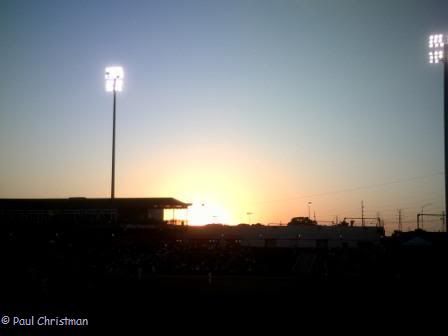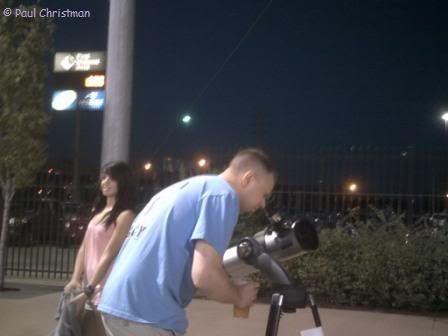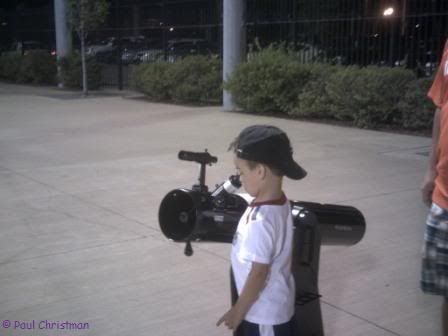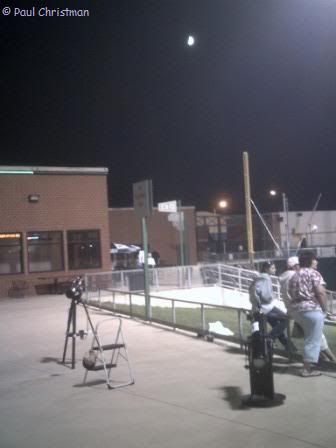I have so much to post about last night, and all of a sudden my computer doesn't want to cooperate with me, so I will post the two that I have sort of ready.
I hadn’t had a really nice night for astronomy since the weekend of the Perseids, and hadn’t had a night alone with the cosmos for at least a month. Last night I woke up just before sunset, and went out to see if the sky was clear. I stayed out until just before sunrise.
The sky was clear as the orange glow to the west gradually faded to ever darker shades of blue. Venus wasn’t very high, it’s fat crescent sinking fast. Mars and then Saturn revealed themselves to my observant eyes, teasingly reminding me of their nights of glory, with longer, deeper darkness, and bitterly cold winds to bear. Those two frozen worlds shunned the summer night, and disappeared from sight.
Chilly for August, the mosquitoes stayed away. Not a single buzz in my ear under my hoodie. A few crickets chirping, airplanes descending, and coyotes baying at trains off in the distance were the only sounds I heard.
The Moon was up with the night, then Jupiter and Uranus too. But their westward journey would be many hours, while others would not, so I searched the Scorpion, the Archer, and mighty Hercules for spherical stellar globs, ancient miniature galaxies, yet part of our own. By the hundreds of thousands, starlight filled my eye, well received on it’s journey afar. Among these timeless stars, a Ring was expanding, cast off from an exhausted, far away star.
Four dots with a giant, dancing away, and a storm raging larger than Earth. On our beaten up rock, watch the sunlight retreat as she moves to the east, waning nearly a fortnight. Nearby is Herschel’s grayish-blue disk, two hours sunlight distant.
Dazzling stars, finding their place in the Milky Way. Clustered together, by the dozens and scores, some will last much longer than others.
And here comes the Big Dog, to herald the Sun, my quiet night of observing is done.
It was an awesome night, starting with the planets and the Moon, moving on to a string of Messier globulars, keeping track of the sunset on the Sea of Crises and the Galilean Moons around Jupiter, ending with quite a few open clusters, and of course one last look at the Moon and Jupiter.
For a nearly full Moon, I had quite an observing list, in order observed:
Venus
Mars
Saturn
Moon
Jupiter
M28
M22
M80- Very bright.
M 4
M13- Better than M22.
M57
Albireo
Coathanger
M71
M11
Uranus
M92- First time observed! Bright core.
M 9- First time observed. Kind of washed out by LP.
M 6
M54- Really small, really faint.
M31
Pleiades
Hyades Cluster
M29
Double Cluster
M39
M35
M37
M36
M38
M42
M34- First time observed. Nice!
Sirius
I hadn’t had a really nice night for astronomy since the weekend of the Perseids, and hadn’t had a night alone with the cosmos for at least a month. Last night I woke up just before sunset, and went out to see if the sky was clear. I stayed out until just before sunrise.
The sky was clear as the orange glow to the west gradually faded to ever darker shades of blue. Venus wasn’t very high, it’s fat crescent sinking fast. Mars and then Saturn revealed themselves to my observant eyes, teasingly reminding me of their nights of glory, with longer, deeper darkness, and bitterly cold winds to bear. Those two frozen worlds shunned the summer night, and disappeared from sight.
Chilly for August, the mosquitoes stayed away. Not a single buzz in my ear under my hoodie. A few crickets chirping, airplanes descending, and coyotes baying at trains off in the distance were the only sounds I heard.
The Moon was up with the night, then Jupiter and Uranus too. But their westward journey would be many hours, while others would not, so I searched the Scorpion, the Archer, and mighty Hercules for spherical stellar globs, ancient miniature galaxies, yet part of our own. By the hundreds of thousands, starlight filled my eye, well received on it’s journey afar. Among these timeless stars, a Ring was expanding, cast off from an exhausted, far away star.
Four dots with a giant, dancing away, and a storm raging larger than Earth. On our beaten up rock, watch the sunlight retreat as she moves to the east, waning nearly a fortnight. Nearby is Herschel’s grayish-blue disk, two hours sunlight distant.
Dazzling stars, finding their place in the Milky Way. Clustered together, by the dozens and scores, some will last much longer than others.
And here comes the Big Dog, to herald the Sun, my quiet night of observing is done.
It was an awesome night, starting with the planets and the Moon, moving on to a string of Messier globulars, keeping track of the sunset on the Sea of Crises and the Galilean Moons around Jupiter, ending with quite a few open clusters, and of course one last look at the Moon and Jupiter.
For a nearly full Moon, I had quite an observing list, in order observed:
Venus
Mars
Saturn
Moon
Jupiter
M28
M22
M80- Very bright.
M 4
M13- Better than M22.
M57
Albireo
Coathanger
M71
M11
Uranus
M92- First time observed! Bright core.
M 9- First time observed. Kind of washed out by LP.
M 6
M54- Really small, really faint.
M31
Pleiades
Hyades Cluster
M29
Double Cluster
M39
M35
M37
M36
M38
M42
M34- First time observed. Nice!
Sirius





















